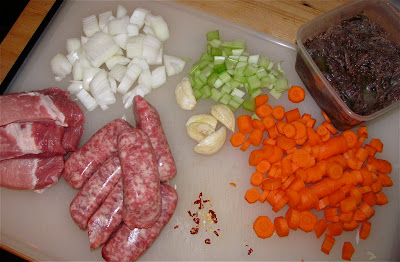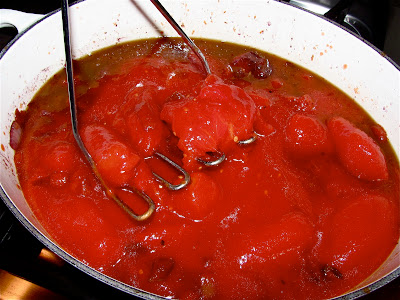The sweetest pastry that I have ever had was a gift from a woman whose name I do not know, face I did not see, and kindness I cannot possibly repay.
This pastry, a miniature cannoli, came to me in the most peculiar way and in the unlikeliest of settings. It was tossed into the limousine that I was riding in. On the way to my mother's burial.
You can't make this stuff up.
My brothers and I are not the limousine type, but we had sprung for two cars that morning so that the elders in the family, my mother's brothers and sister and their spouses, would not have to drive. Once the funeral service at the church was over and the aunts and uncles were safely inside their car, my brother Joe and I took our places in the other limo. I was on the driver's side, at the door. My brother Michael was in front of me, and so he was at a door as well.
It all happened so fast. Just as the driver began to move away from the curb Michael's door swung open and I could see two hands and a white box thrust towards him. An instant later I saw the hands retract but not the box. Then the door slammed shut and the driver went on his way.
"What was that?" I heard Joe say as I looked to see the back of a woman's figure moving slowly away from the car.
I could tell by the way her hands were cupped over her face that she was weeping.
"Weird," said somebody else, one of my young nephews no doubt.
It was several minutes before anybody addressed this strange occurrence again. The church, you see, was around the corner from where my mother had spent much of her life, and so driving along these streets, behind a vehicle carrying her casket, was a notable event for us all. We went past the apartment house where she had lived as a girl, then a wife, and finally as a mother. We drove past the candy store that was first my grandfather's and then my parents', until my father died and mom could no longer run the business by herself.
It was a planned post-funeral procession which we family members had steeled ourselves for the entire morning. We were not about to allow a stranger's unwanted interruption impose upon so poignant a moment in our lives.
A few minutes later, after we had cleared the last memorable site along the narrow pathway of my mother's life, Michael began to laugh.
"Cannoli," I heard him say. "A whole box of them. Look."
He raised the white box to show those of us behind him. It was a pastry box, I now could see.
"Probably one of the ladies from the Rosary Society," Joe offered, a wise deduction as our mother, a pillar of her church for 60-plus years, would be badly missed by its constituents.
"I'll be damned," was the best I myself could add to the moment.
Unlike the rather grand funeral my mother's church presented her with, the graveside service was quite brief. Though sunny and clear, that February day was bitterly cold. As the priest read passages from a book he held in glove-covered hands I noticed some of my cousins huddling close by their elderly parents, trying to warm them no doubt.
Everyone looked so awfully grief-stricken and sad. My mother had been blessed by a family and many friends who loved her very much.
I imagined that as soon as the service had ended people would move quickly to their cars seeking warmth, but the opposite happened. We all stood there. Silent for the most part, except for the soft sounds of weeping and the occasional chattering of teeth.
Nobody, it became clear, wanted to leave my mother in the cold all by herself.
Then suddenly Michael went to the limousine, reached inside and took out the box of cannoli. He lifted the top, made a rough calculation as to how many pastries there might be (two and a half dozen, he later told me), then moved about offering cannoli to the people in our group.
Even my mother got one, as the last cannoli was laid to rest alongside her.
If you knew my mother you would appreciate how fitting a gesture this all was. Throughout her life the woman was happiest when she could feed people. Nothing came remotely close to pleasing her as this. In her final days, I am certain that her inability to cook even simple meals for the people she loved brought her far more pain than any ailment she endured.
And so I will forever be grateful to the churchwoman I never knew, but also to my brother for his quick thinking that day about how best to use her gift. In an instant a box filled with 30 miniature cannoli turned painful sobbing into joyous laughter, and the mood on a cold winter's day from darkness to blistering light.
Just as mom would have wanted.





















